Why the shade garden is so underrated - and how to create your own
Under a canopy or beside a shed: shade is underrated in a garden. Adrian Higgins unveils the beauty and mystery of a landscape in the shade, and how you can plant one
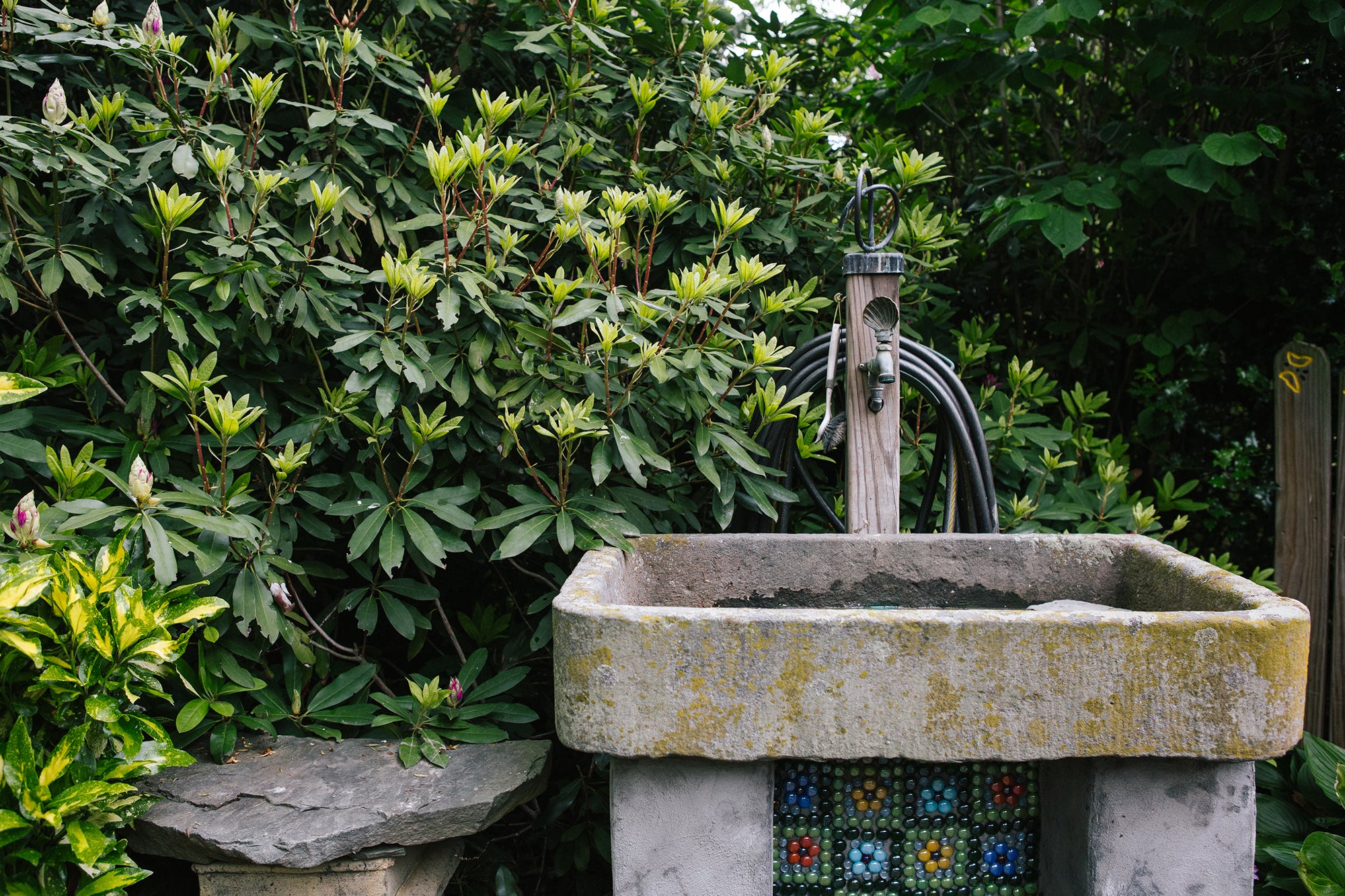
Shade gathers from year to year in the garden like the wrinkles on your face, growing more pronounced with time.
Small bushes develop into large shrubs, young patio trees shift from skinny to broad, newly planted trees rise to the rooftops and beyond. This is a direct consequence of our love of plants and is all good.
Or as horticulturist Jenny Rose Carey puts it: “I love planting little trees and watching them grow.” She has done this over the past 20 years in her four-and-a-half-acre garden in the Philadelphia suburb of Ambler. “As you mature as a gardener, your trees grow along with you, and that’s a nice thing.”
So why are so many people down on shade?
First, because they can’t grow roses or zinnias in the gloom, and for many people a garden must have floral colour to count. This is a limited view of the garden, where leaf forms, textures and plant architecture provide much more satisfaction, if only subconsciously. Another argument is that you can’t have a vegetable garden in the shade. This is true, and there is no way around that.
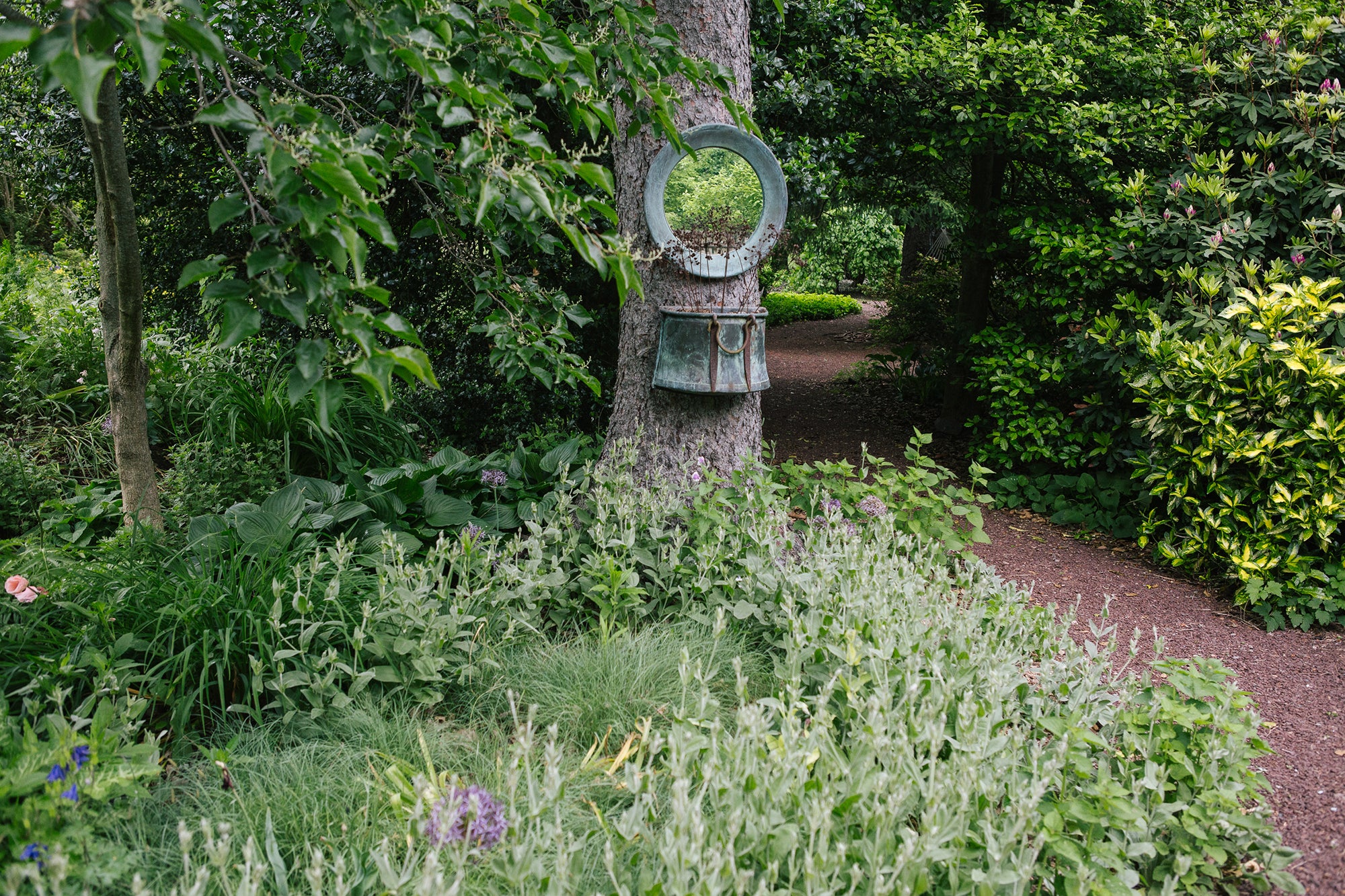
Shade gets the blame when the homeowner wakes up to the fact that the garden is overgrown and dank. This is a product, typically, of folks planting screening trees – especially evergreens – that were always destined to outgrow their allotted space.
But I’m with Carey in her belief that the shade garden is not just all right, and not just an asset now that the heat is upon us, but is actually the best part of the garden. Why?
Artfully planted and groomed, it is the most sheltered and cocooning place to be. The hallmark of the shade garden, she says, is its “intimacy”, which I take as its sense of privacy, of being placed in a serene environment away from the chaos of modern life.
Carey, who is director of the Pennsylvania Horticultural Society’s public garden and nursery, Meadowbrook Farm, has written a book addressing the practical aspects of making and keeping a shade garden. It has an appropriately upbeat title, Glorious Shade. “I hear so much negative stuff from people about shade, and I’m not a negative gardener. I’m positive.”
After reading her book and visiting her garden (and developing my own shade garden over more than two decades), I wrote a synthesis of Carey’s explorations and my own experiences.
Finding Your Shade
Shade occurs when sunlight is blocked – simple enough, except that shade is a moving target.
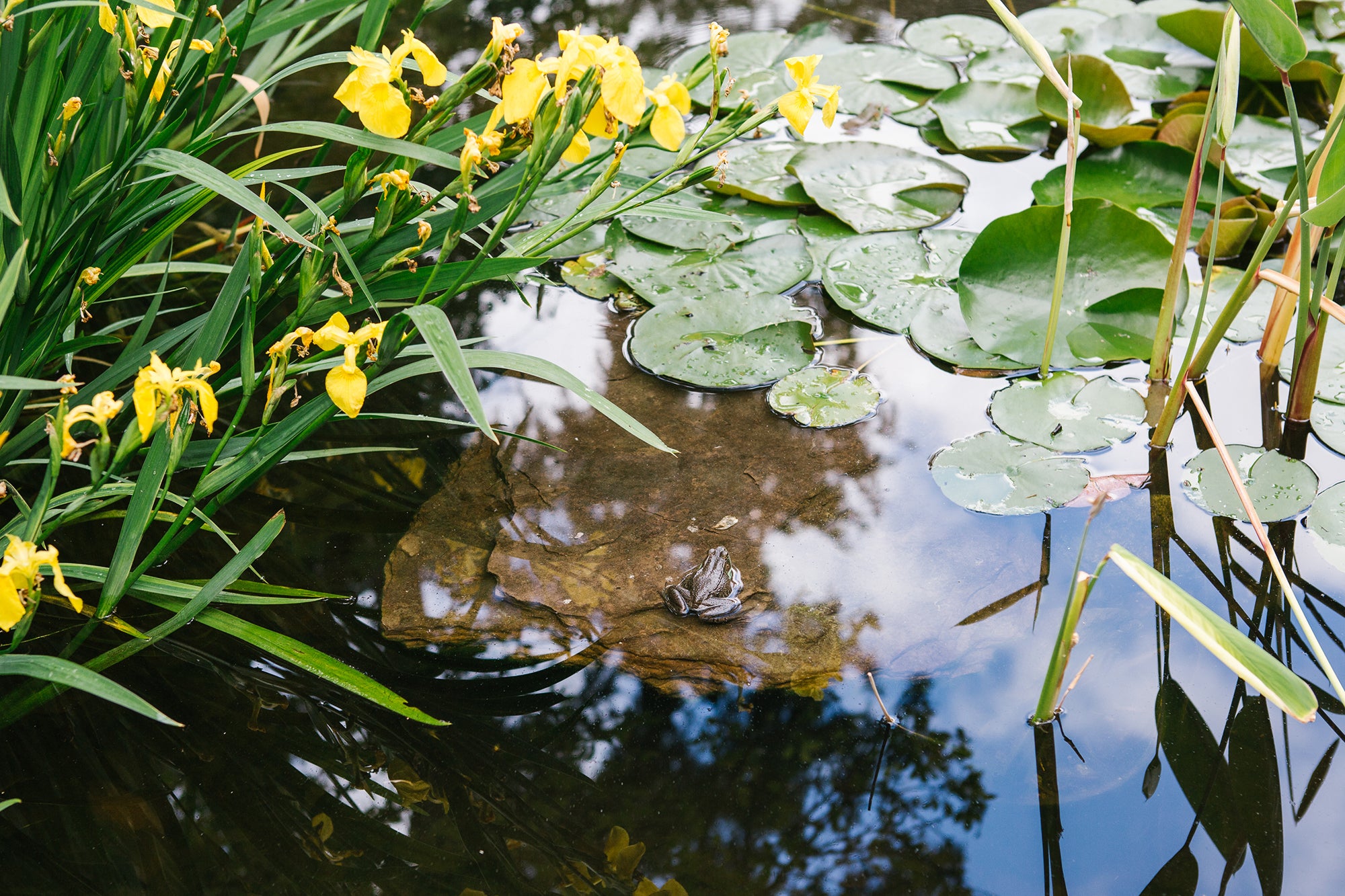
The sun moves across the sky daily, and seasonally it shifts its duration, height and strength (pedants will point out it’s the Earth moving). In March, a tree offers scant shade; in June, it is a large, living parasol. In the space of five years, an area that is in baking sun can become shaded.
This elusive nature of shade registered with Carey when she saw one of her daughters, as a two-year-old, try to capture her uncooperative shadow (her three daughters are now grown, and one plans to hold a wedding reception in the garden this year).
In hot climates, many plants do better with a little shade, relieved of the heat and stress of the sun’s rays, but in areas of deep, unremitting shade, the range of plants that will be happy narrows dramatically, so it’s important to gauge the nature of your shade.
Carey deconstructs the catch-all label of “partial shade” into something more useful.
Edge shade is found at the boundary of woodland and provides the best of both worlds. Plants such as redbuds, dogwoods and azaleas thrive in such places.
Dappled shade is produced by trees with fine foliage or elevated canopies. Old tulip poplars and oaks are good examples of this. This is a heavenly place for all concerned – lots of light without the searing sunbeams.
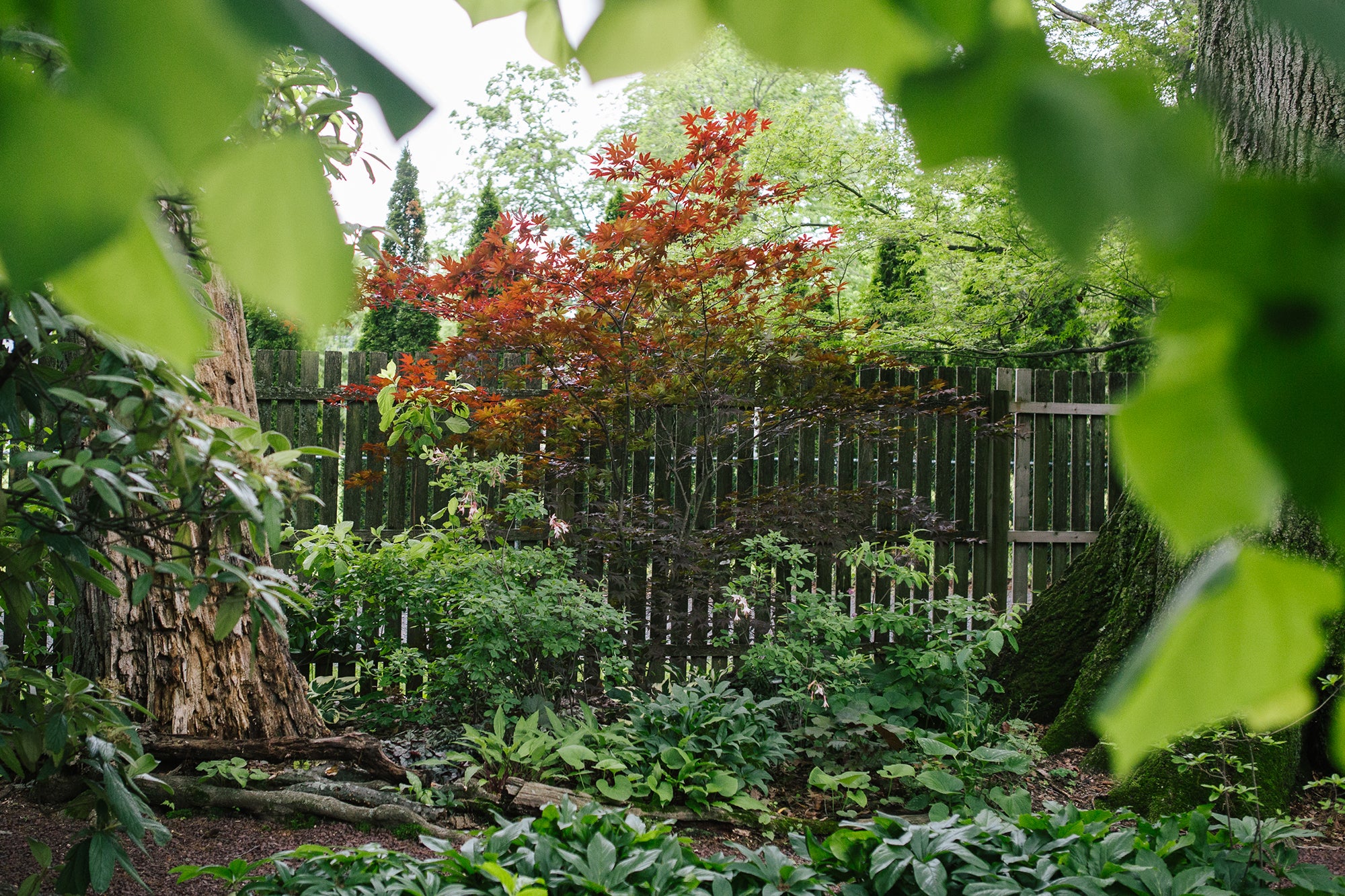
Bright shade is found in dark areas that get a lot of reflected light from bodies of water, light-coloured walls and windows.
Afternoon shade is found where the shading element is on the western side of things, morning shade when it’s to the east. Although, any area in uninterrupted afternoon sunlight is generally considered to be a sun garden.
The point is that you need to observe light and shade patterns in a given area at different times of day to gauge its shadiness.
The Basics of a Shade Garden
Turning a wooded lot into a sweet garden is not just a state of mind; it requires action.
Your plot: Lots with trees tend to be neglected, and neglect leads to the arrival of heavy-duty weeds, particularly invasive vines such as porcelain berry, English ivy, honeysuckle and poison ivy.
“Start by chopping the top growth,” Carey writes in her book, “and then dig up the roots.” Then comes the sterling advice: They may re-sprout; be vigilant.
After you have cleared those (take the usual care with poison ivy), you may find that previous occupants used the woods as a dump. I spent weeks clearing my wooded areas of brush, rubble, rotting firewood and timbers.
You may also want to take down volunteer trees, even non-weedy ones, that have simply produced a thicket. This will open up space and light and make the remaining plants happier. Because she has the room and loves wildlife, Carey has allowed a few dead trees to remain as high stumps, and keeps them for birds as long as the trunks are structurally sound.
Mulch: Mulch retains soil moisture and discourages weeds. Woodlots make their own mulch – leaves – and as they decay, the leaves improve the soil structure and feed beneficial soil life. Fallen leaves are best shredded and then spread carefully on growing beds to avoid smothering plantings. For times when you don’t have enough leaf mould to go around, Carey suggests gathering pine needles, if you have them. If you resort to importing bark or wood mulches, use finely shredded versions around smaller plants, and don’t put down a layer of more than two inches.
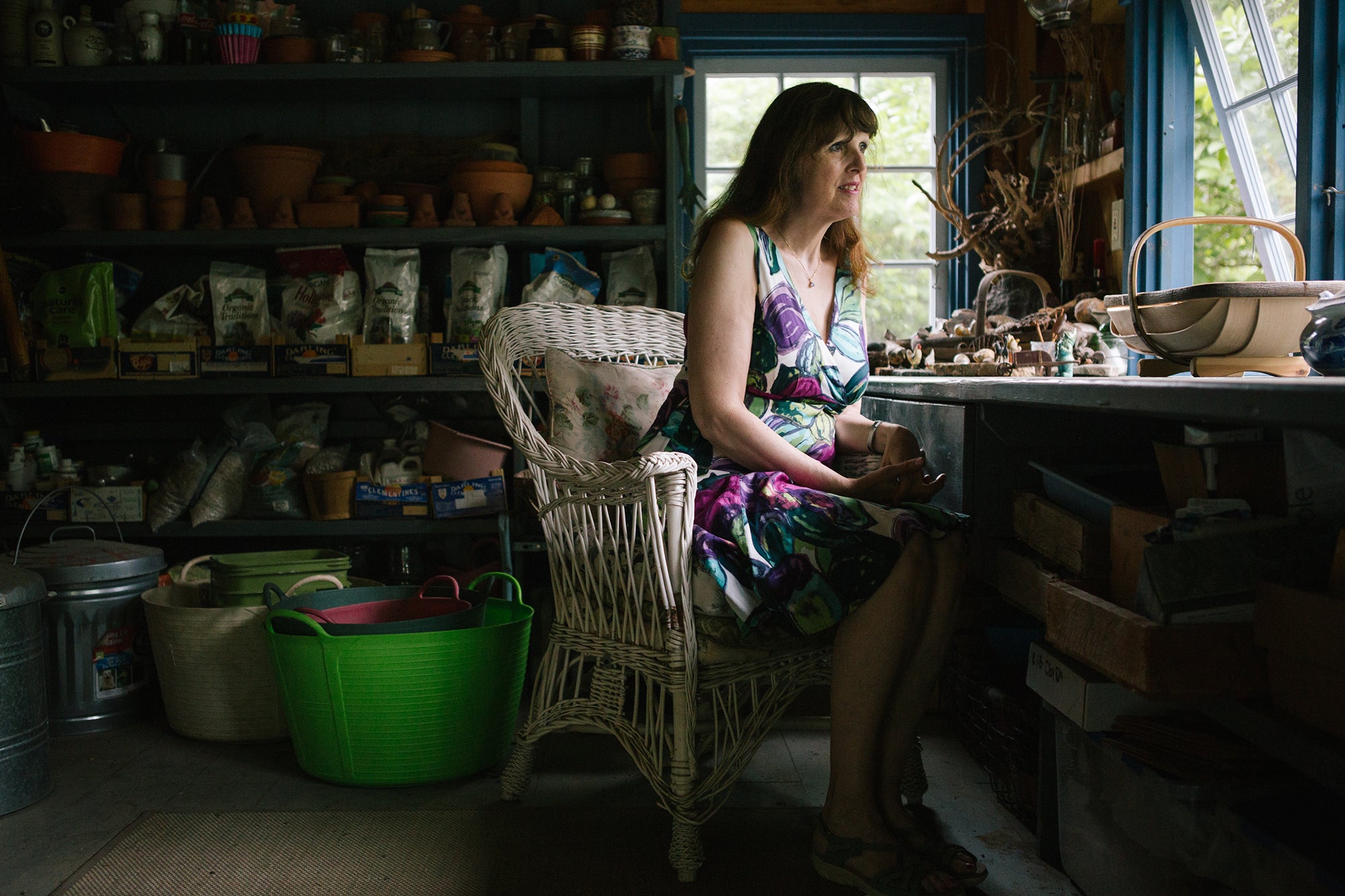
Plants: The best mulches are ground covers, which in turn form the basis of layered plant compositions. These strata include bulbs, perennials, spring ephemerals such as trilliums and Virginia bluebells, small-to-large shrubs, understory trees and, finally, the canopy trees that are providing the shade. These plantings peak at different times, but one highlight in Carey’s garden is in mid-spring, where the fresh, bright growth of hostas answers that of the Japanese maples, amid a swirl of delicate pink-flowering dicentras, blue-flowering brunneras and the spotted foliage of the lungworts (her book offers plant lists for given conditions).
Planting in established woodland requires its own skill. You don’t want to smother tree roots with soil or chew them up with digging equipment. The key is to install young plants – perennials as plugs, for example – in the crevices between the tree roots. Carey likes to make a mixture of sand and leaf mould and, if there is room, work it into the planting hole. Small bulbs work well in the tight spaces between tree roots, including such March and April bloomers as chionodoxa, scilla and Iris reticulata.
Watering: Carey dislikes irrigation systems, and not just because her Victorian property – Northview – is on a well. Irrigation systems can keep soil too wet and lead to the decline of many woodland plants, including big trees. Moreover, frequent shallow waterings encourage surface root systems that compromise plant resilience. She prefers occasional deep waterings to encourage roots to grow downward. For new plants, she gives them a good drink once a week in their first growing season but is more stinting the next year.
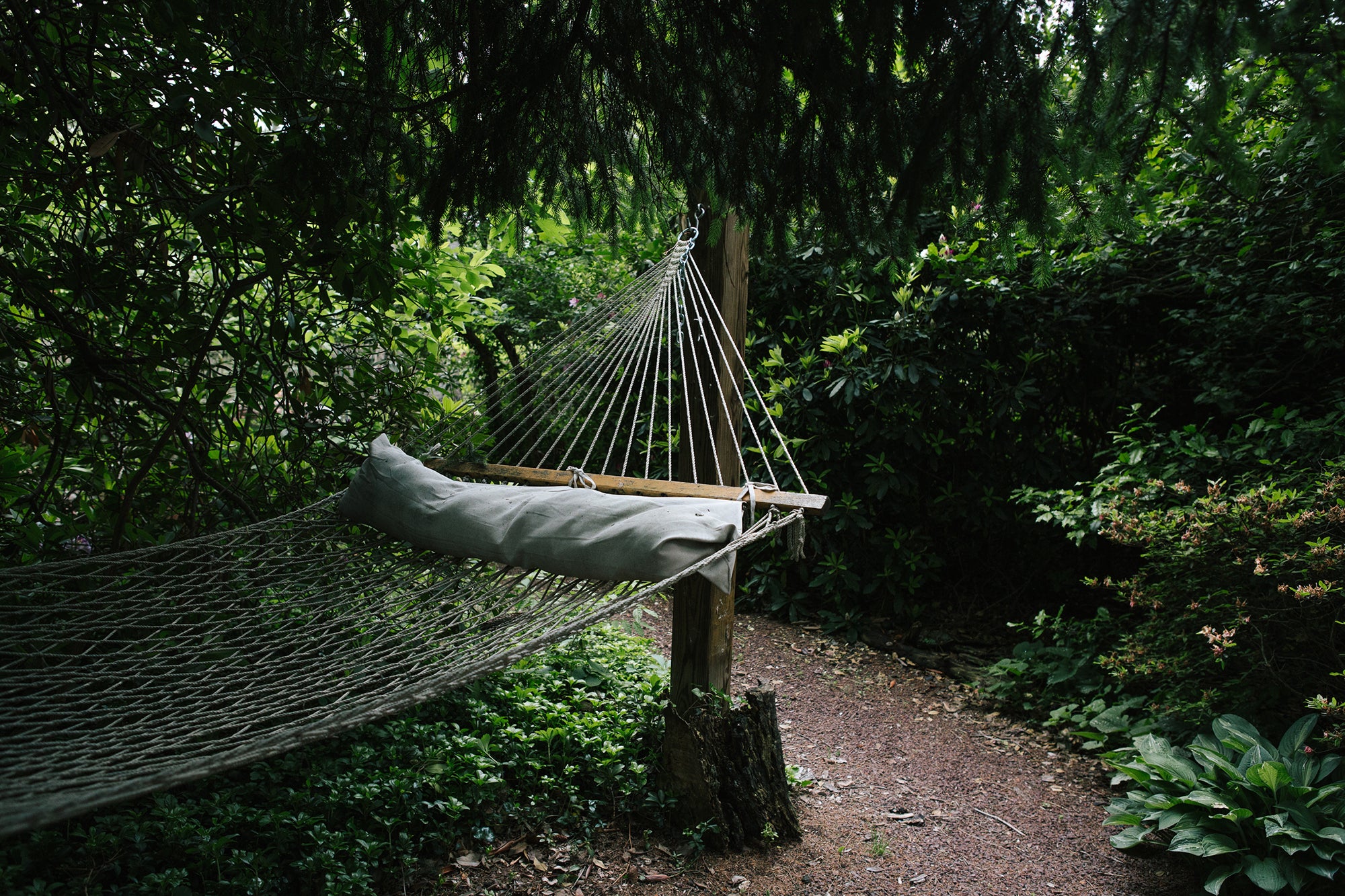
Paths: Walking paths are vital elements in shade gardens; they keep feet from compacting plant roots and can fix problems with erosion. A layer of wood chips, replenished every year or so as it breaks down, will work in more naturalistic areas. But paths go way beyond utility; they establish the direction and character of the journey, which leads to the next point.
Elements of Design
A shade garden needs all the design elements of the larger garden. It may need more so that it “reads” as a purposeful landscape. Consider how you might create all the important design features that make a garden beautiful and satisfying: portals, areas of transition from one space to another, focal points, framed views and, importantly, places to linger.
The last category is well served in Carey’s garden, which is full of spaces of repose, many of them infused with whimsy. This, in turn, is connected to Carey’s cultural DNA – she moved to the United States from her native England 30 years ago. English gardeners are not just notoriously passionate about horticulture but also eccentric with it.
This has produced such features as a children’s fairy garden whose central water feature is a spouting copper teapot, and the stumpery. A popular Victorian idea, this is a display of tree stumps and roots presented as a form of grotesque sculpture. You either like it or you don’t. One famous example is at Prince Charles’s garden at Highgrove. Carey says the exposed roots are useful to educate visitors about the hidden architecture of trees.

Every good peregrination through a new garden deserves a memorable ending, and Carey presents the ne plus ultra of payoffs, a splendiferous garden shed she calls Rose Cottage. There is something inexplicably English about the role of the shed in the garden; like the shade garden itself, it is a blend of utility, artistic expression and cosy retreat.
Carey’s is even more, functioning as the bridge of her ship from which she steers the maintenance and upkeep of her garden. On one wall, clay pots are stacked neatly. On another, garden tools are hung reverentially. Around a broad desk behind a bank of windows, she keeps plant records and catalogues. Above the windows, collected seeds are stored in decorative jars. She can tell you that she has 368 native trees and shrubs, and what blooms when. With her gardener Hanna von Schlegell, she has cultivated a garden that is in flower every day of the year, though not all in shade. Carey has an extensive collection of winter-flowering witch hazels. “I like collections. A lot of British gardeners like collections,” she said. “I go a bit crazy on the snowdrops as well.”
And yes, snowdrops like to grow and spread in the shade, timing things so they appear at the shade garden’s brightest time, when the leaves are off the trees. Now, in the blazing heat, the snowdrops have retreated into the soil, and it’s the gardener who plants herself in the embracing darkness.
© Washington Post
Join our commenting forum
Join thought-provoking conversations, follow other Independent readers and see their replies
Comments